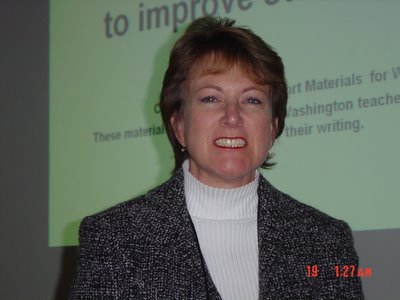Secondary Literacy Adoption


What did you see that you thought would help you to teach reading, writing, and communication GLEs?
I have sent a message to Holt asking about their materials. I will let you know when I learn more.
Reading is the key to success in life. I am dedicated to facilitating the creation of a world of literate, highly functioning citizens.


I must admit this title on a recent Education Update from ASCD grabbed my attention. I was immediately reminded of Marzano's What Works in Schools. Marzano's compilation of years of research shows that timely feedback is critical for student learning.
Recently, I attended a workshop with two kindergarten teachers and one preschool teacher. The workshop was sponsored by the Kennewick School District and an organization called National Children's Reading Foundation. KSD has been collecting data and working on interventions since 1996. The most striking data shows that the achievemnt gap really starts in the birth through five age range. In fact, "100% of the gap in reading acheivement between the top and bottom quartiles in reading is created prior to the beginning of the second grade" (READY! for Kindergarten).
I recently decided to sign up for google alert to get the links for articles on literacy. As a result, I read about a unique endeavor taking place in Houston, Texas. The Houston Public Library has joined with a supermarket chain called H-E-B to create hip-hop cafes that attempt to attract teens to the cool new world of the library. These cafes will feature slam poetry, teen book discussions, and author visitations.

Washington State has completed the reading grade level expectations and I have been working with grade level teams to complete the first level of alignment. The documents are done and will soon be posted on the PSD website. This has been an enormous undertaking, so I am feeling a great deal of accomplishment as we work to decide how we now move to deep alignment, the next step. It is essential for us to help staff understand the importance of this work.

Here are some pictures of my team. We are preparing for our presentation and getting ready to share our work.

Recently, we hosted the first ever Accelerated Reader Seminar 501 for elementary school administrators, building learning specialists, and librarians. The response was overwhelmingly positive. Jim Church, The Renaissance Place trainer, did an outstanding job of explaining the proper use of AR in the schools. As we are implementing the 90 minute uninterrupted reading block, many questions about where AR should be used in relationship to the block have arisen.
